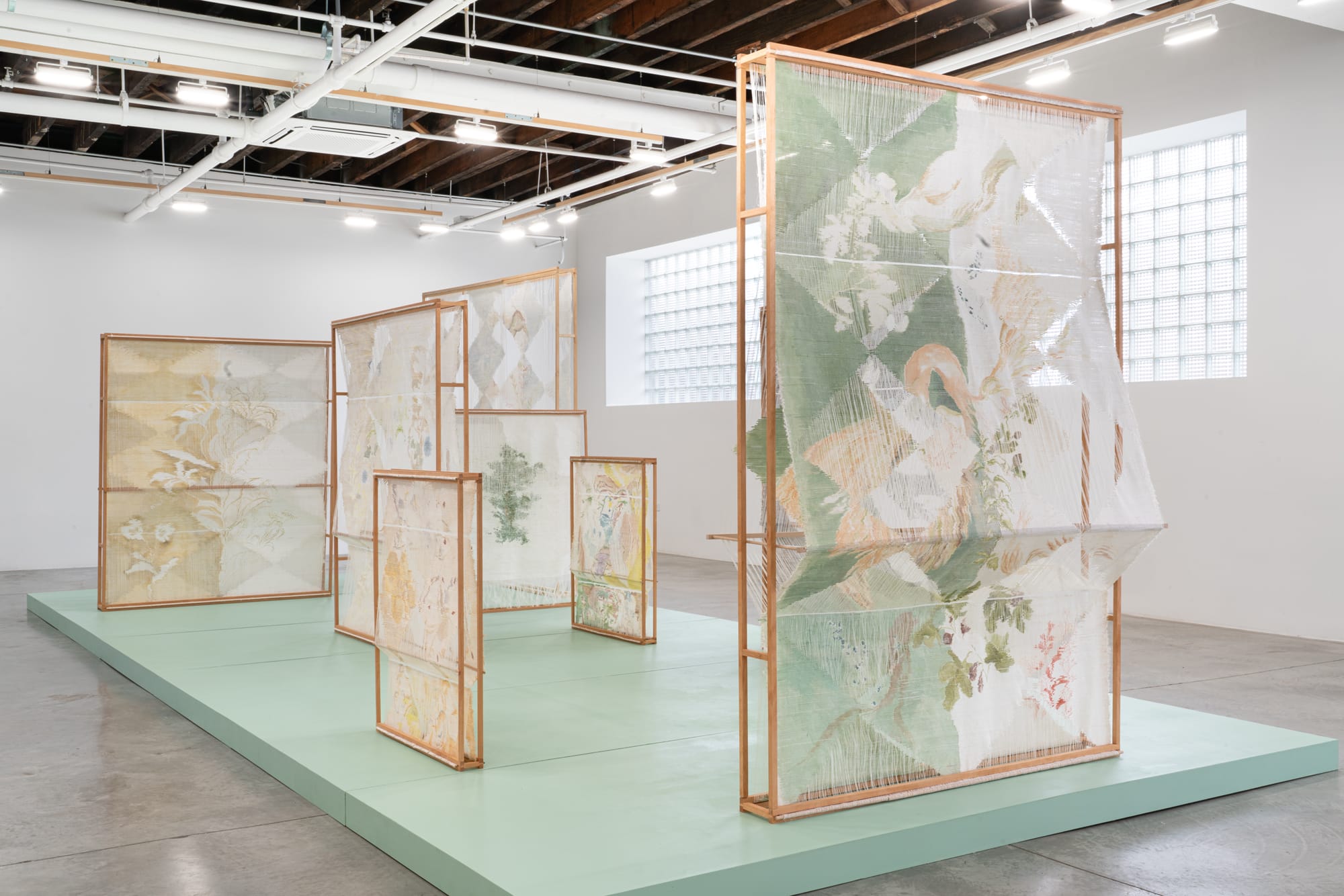“Miss. Omowunmi” (2022), acrylic on textured canvas, 37 x 30 x 1 inches. All images © Awodiya Toluwani, courtesy of Zidoun-Bossoyt Gallery, shared with permission
Whether portraying a quiet domestic scene or a sweeping landscape, Awodiya Toluwani’s striking paintings are connected through a unique surface. As much a subject of the work as his portraits, each canvas is covered in relief marks that imitate scars, or tribal marks, historically common to several indigenous cultures in Africa. When European colonial governments began to condemn and criminalize the practice, it declined or disappeared altogether. But for some, continuing the tradition meant performing an act of resistance.
Toluwani’s paintings are created on this textured “skin,” layering empowered portraits and atmospheric scenes over the dark legacy of colonialism and human enslavement. The artist considers both the physical scars of slavery—inflicted by whips and cane lashes—and the trauma it wrought on communities throughout Africa, highlighting a complex history. “History is a very essential part of human existence,” Toluwani says in a statement. “It gives us a better understanding of lives lived in the past, better ways to live in the present, and what legacy to leave for the future generations.”
Figures play a central role in Toluwani’s works, whether evocative of Dutch Golden Age paintings, such as Johannes Vermeer’s The Milkmaid (c.1660), or laboring within a broader landscape in a cotton field or a fishing boat. The artist has recently been drawn to compositions redolent of Lagos, Nigeria, especially an inner-city slum known as Makoko Village, in which residents build stilt houses over a lagoon. The scarred textures are always present, ranging from recognizable images of spiders, feet, or hearts, to abstract glyphs and geometric shapes.
Learn more about the artist on Zidoun-Bossoyt Gallery’s website.
“The Milkmaid” (2022), acrylic on textured canvas, 61.81 x 48.82 inches
“Sweat and Blood” (2022), acrylic on textured canvas, 59.84 x 77.95 inches
“Mother’s Instinct” (2022), acrylic on textured canvas, 61.81 x 48.82 inches
“Dawn Set” (2023), acrylic on textured canvas. 48 x 72.25 inches
“Minding One’s Business” (2024), acrylic on textured canvas, 59.5 x 78 inches
“Queen Yelena” (2022), acrylic on textured canvas, 48.82 x 61.02 inches
“Wife of Akenge” (2022), acrylic on textured canvas, 36.02 x 29.92 inches
Do stories and artists like this matter to you? Become a Colossal Member today and support independent arts publishing for as little as $5 per month. The article Stunning Portraits and Landscapes Emerge from ‘Scarred’ Canvases in Awodiya Toluwani’s Paintings appeared first on Colossal.


